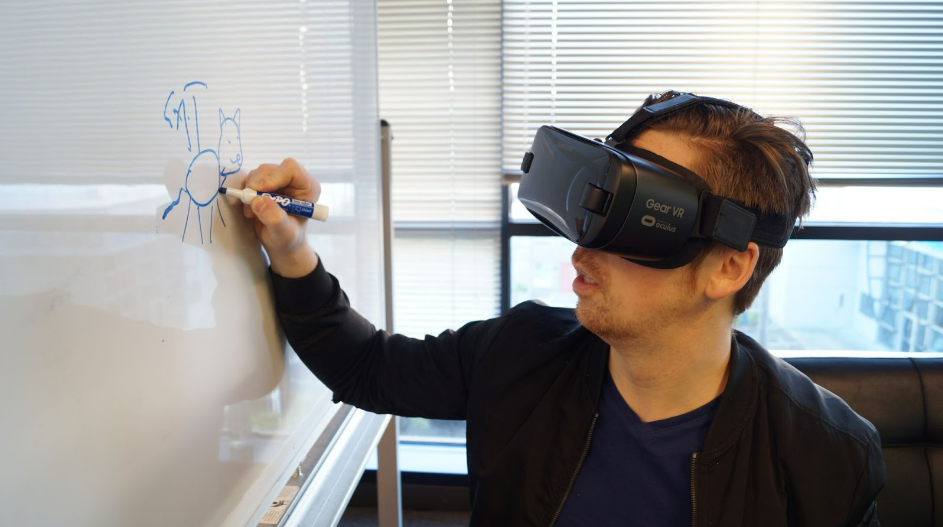
The use of augmented reality (AR) technology could fundamentally alter how persons with disabilities interact with the outside world and receive information.
AR can provide deaf persons with a special set of advantages that improve learning and exploration.
In this post, we’ll look at how augmented reality (AR) is helping the deaf population and enhancing their experiences in numerous contexts.
What is Augmented Reality?
Augmented reality is a technology that superimposes computer-generated images on top of a user’s view of reality, resulting in an enhanced or augmented version of reality.
This technology can be accessed via a tablet or smartphone device, wearable technology such as smart glasses or a head-mounted display, or via surface projection.
A number of industries, including education, entertainment, and healthcare, are using augmented reality technology.
Benefits of AR for Deaf People
AR has the ability to help the deaf community in a number of ways, including boosting communication, strengthening language learning, and offering visual aids for navigation and exploration.
Let’s examine some of the ways that augmented reality is being applied to enhance the lives of deaf people.
Language Learning
The ability of AR technology to improve language learning for those who are deaf is one of its most significant advantages.
Deaf people may find it more difficult to learn a language because they lack the same auditory cues as hearing persons.
Visual cues and context provided by AR can assist deaf learners in comprehending and retaining information.
For example, the SignAll system is an AR tool that teaches hearing individuals American Sign Language (ASL).
The program tracks the user’s movements with a camera and gives immediate feedback on the correctness of their signing.
By giving deaf students visual tools to learn and practice signing, this technology can also be used to teach ASL.
Communication
The usage of augmented reality (AR) technology can also help hearing and deaf people communicate more effectively.
The use of technology to facilitate text-to-speech and speech-to-text translation can help to reduce some of the barriers to communication between hearing and deaf individuals.
For instance, the Ava app is a captioning solution driven by the augmented reality that offers real time captioning for group interactions.
The program converts speech into text using voice recognition algorithms and may be used on a smartphone or tablet.
This technology can be very useful when a deaf person is interacting with a group of hearing people, such as in a school or business meeting.
Navigation and Exploration
With AR technology, visual aids for exploration and navigation can be provided.
For deaf people who might depend on visual clues to get around, this can be especially useful.
Real-time information about the environment, including instructions, areas of interest, and other useful information, can be provided using augmented reality technology.
For example, EyeCane is a mobility aid driven by the augmented reality that can be helpful to deaf people as well as those who are blind or visually handicapped.
The system detects obstacles using ultrasonic sensors and gives the user haptic feedback via handheld vibrations.
The device also uses AR technology to provide real-time information about surroundings, such as the distance to objects and the location of doors and windows.
Accessibility
For the deaf, augmented reality technology can increase their access to information and pleasure.
With augmented reality (AR), deaf people can more easily comprehend and enjoy movies, television shows, and other forms of media by providing visual help.
For instance, the AcceLINX platform is an accessibility tool driven by augmented reality that offers real-time captions for movies and television programs.
The platform may be used on a smartphone or tablet and instantly converts spoken words into text using speech recognition technology.
Deaf people who may find it difficult to follow along with movies and television programs without subtitles may find this technology to be of special use.
Conclusion
For deaf persons, augmented reality technology has the potential to offer a wide range of advantages, from improving language acquisition and communication to offering visual aids for exploration and navigation.
The use of technology can help in removing some of the obstacles to inclusion and access that deaf people encounter in a variety of contexts, such as communication, education, and entertainment.
We can anticipate seeing many more cutting-edge uses for augmented reality as it develops and becomes more broadly accessible, which will help the deaf community and promote accessibility and inclusion for all.
For those looking for additional support, Unspoken Language Services offers interpreting services to help bridge the communication gap between the deaf and hearing communities.
Thumbnail Photo Credit to: Photo by Eugene Capon

